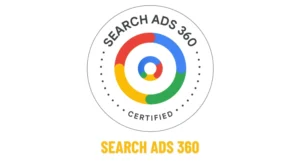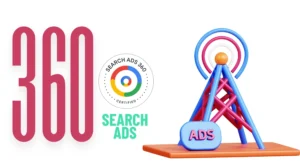Staying Ahead of Google Algorithm Changes: A Comprehensive Guide for Pest Control Site Owners
By TOI Staff
June 6, 2023
Update on : June 6, 2023

As a pest control business owner, it’s crucial to stay informed about the latest Google algorithm changes and adapt your website accordingly to maintain or improve your search engine ranking. Moreover, the correct pest control seo strategies can help you to promote your pest control business and attract more potential customers. In this comprehensive long-form blog post, we will educate you on the importance of keeping up with Google algorithm updates and provide strategies to overcome any challenges that may arise.
Understanding Google Algorithms and Their Impact on Your Pest Control Website
Google’s algorithms are a set of complex rules and calculations used to determine the ranking of websites in search results. These algorithms consider numerous factors, such as website relevance, quality, and user experience, to ensure that users find the most helpful and accurate information for their search queries. As a pest control site owner, staying updated with Google algorithm changes is essential for several reasons:
- Maintaining search engine visibility: Keeping up with algorithm updates helps ensure that your website remains visible in search results, driving organic traffic and attracting potential customers.
- Adapting to industry trends: As the pest control industry evolves, so do the factors that influence search engine rankings. Staying informed about algorithm changes allows you to adapt your website and content strategy accordingly.
- Improving user experience: Google’s algorithms prioritize websites that provide a positive user experience. By staying updated with the latest changes, you can optimize your site to meet these standards and keep your audience engaged.
Tracking Updates and Assessing Your Website’s Affected Areas
To stay ahead of Google algorithm changes, it’s essential to accurately track updates and assess how they impact your pest control website. Here are some tips on how to do this effectively:
- Follow industry news and resources: Keep an eye on reputable SEO blogs for the latest information on Google algorithm updates and their implications for your website.
- Monitor your website’s performance: Regularly review your site’s analytics data, paying close attention to any sudden changes in traffic, bounce rate, or conversion rate that may indicate an algorithm update’s impact.
- Conduct a site audit: Perform a comprehensive audit of your website to identify any areas that may be negatively affected by algorithm updates. This may include assessing your site’s content quality, user experience, and technical SEO factors.
Addressing Loss in Search Engine Ranking
If you notice a decline in your pest control website’s search engine ranking following an algorithm update, it’s crucial to address the issue promptly. Here are some steps to take:
- Identify the root cause: Determine which specific aspect of the algorithm update is impacting your site’s ranking. This may involve analyzing your site’s content, backlink profile, or technical elements.
- Implement necessary changes: Once you’ve identified the root cause, make the necessary adjustments to your website to align with the updated algorithm requirements. This may involve updating or removing low-quality content, improving site navigation, or fixing technical issues.
- Monitor results: After implementing changes, closely monitor your website’s performance to assess whether the changes have improved your search engine ranking. If not, continue making adjustments until you see positive results.
Practical Tips and Best Practices for Maintaining Site Optimization
To stay ahead of Google’s constantly evolving algorithms and maintain your pest control website’s search engine ranking, follow these practical tips and best practices:
- Create high-quality, relevant content: Focus on producing informative and engaging content that addresses your target audience’s needs and concerns. Ensure your content is well-researched, well-written, and free from errors.
- Optimize for mobile devices: With the majority of searches now conducted on mobile devices, it’s essential to ensure your website is mobile-friendly and responsive.
- Prioritize user experience: Optimize your site’s navigation, page load speed, and overall design to provide a seamless and enjoyable experience for users.
- Build a strong backlink profile: Acquire high-quality backlinks from reputable sources within the pest control industry to improve your website’s authority and search engine ranking.
- Stay informed: Regularly read up on SEO best practices, industry trends, and Google algorithm updates to remain knowledgeable and prepared for any changes that may impact your website.
In Conclusion
Some businesses view Google algorithm changes as a challenge, but they can also be an opportunity to make your pest control website more visible in search results and attract potential customers. By following the tips and best practices outlined above, you’ll stay ahead of the curve and ensure that your website remains optimized for organic traffic.
With a little effort and vigilance, you can.
Read more: Staying Ahead of Google Algorithm Changes: A Comprehensive Guide for Pest Control Site Owners














